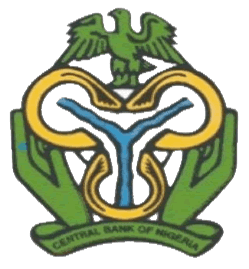Monetary Policy
MPC Mandate of the CBN | Fiscal Policy | Committees | Calendar of Meetings | Educational | FAQ's | Policy Decisions | Policy Communiques | Intl. Economic Cooperations | Monetary Policy Review | Policy Measures | Understanding Monetary Policy Series | Monetary, Credit, Foreign Trade and Exchange policy Guidelines | Monetary Policy Committee Reforms | AfCFTA
The Conduct of Monetary Policy
Monetary Policy Before 1986
Analysis of the institutional growth and structure indicates that the
financial system grew rapidly in the mid 1980s to 1990s. The number of commercial
banks rose from 29 in 1986 to 64 in 1995 and declined to 51 in 1998, while the
number of merchant banks rose from only 12 in 1986 to 54 in 1991 and subsequently
declined to 38 in 1998. In terms of branch network, the combined commercial and
merchant bank branches rose from 1,323 in 1985 to 2,549 in 1996. There was also
substantial growth in the number of non-bank financial institutions, especially
insurance companies. The economic environment that guided monetary policy before
1986 was characterized by the dominance of the oil sector, the expanding role
of the public sector in the economy and over-dependence on the external sector.
In order to maintain price stability and a healthy balance of payments position,
monetary management depended on the use of direct monetary instruments such as
credit ceilings, selective credit controls, administered interest and exchange
rates, as well as the prescription of cash reserve requirements and special deposits.
The use of market-based instruments was not feasible at that point because of
the underdeveloped nature of the financial markets and the deliberate restraint
on interest rates.
![]()
The most popular instrument of monetary policy was the issuance of credit rationing guidelines, which primarily set the rates of change for the components and aggregate commercial bank loans and advances to the private sector. The sectoral allocation of bank credit in CBN guidelines was to stimulate the productive sectors and thereby stem inflationary pressures. The fixing of interest rates at relatively low levels was done mainly to promote investment and growth. Occasionally, special deposits were imposed to reduce the amount of free reserves and credit-creating capacity of the banks. Minimum cash ratios were stipulated for the banks in the mid-1970s on the basis of their total deposit liabilities, but since such cash ratios were usually lower than those voluntarily maintained by the banks, they proved less effective as a restraint on their credit operations.
From the mid-1970s, it became increasingly difficult to achieve the aims of monetary policy. Generally, monetary aggregates, government fiscal deficit, GDP growth rate, inflation rate and the balance of payments position moved in undesirable directions. Compliance by banks with credit guidelines was less than satisfactory. The major source of problem in monetary management were the nature of the monetary control framework, the interest rate regime and the non-harmonization of fiscal and monetary policies. The monetary control framework, which relied heavily on credit ceilings and selective credit controls, increasingly failed to achieve the set monetary targets as their implementation became less effective with time. The rigidly controlled interest rate regime, especially the low levels of the various rates, encouraged monetary expansion without promoting the rapid growth of the money and capital markets. The low interest rates on government debt instruments did not sufficiently attract private sector savers and since the CBN was required by law to absorb the unsubscribed portion of government debt instruments, large amounts of high-powered money were usually injected into the economy. In the oil boom era, the rapid monetization of foreign exchange earnings resulted in large increases in government expenditure which substantially contributed to monetary instability. In the early 1980s, oil receipts were not adequate to meet increasing levels of demands and since expenditures were not rationalised, government resorted to borrowing from the Central Bank to finance huge deficits. This had adverse implications for monetary management.

 Flickr
Flickr Instagram
Instagram LinkedIn
LinkedIn